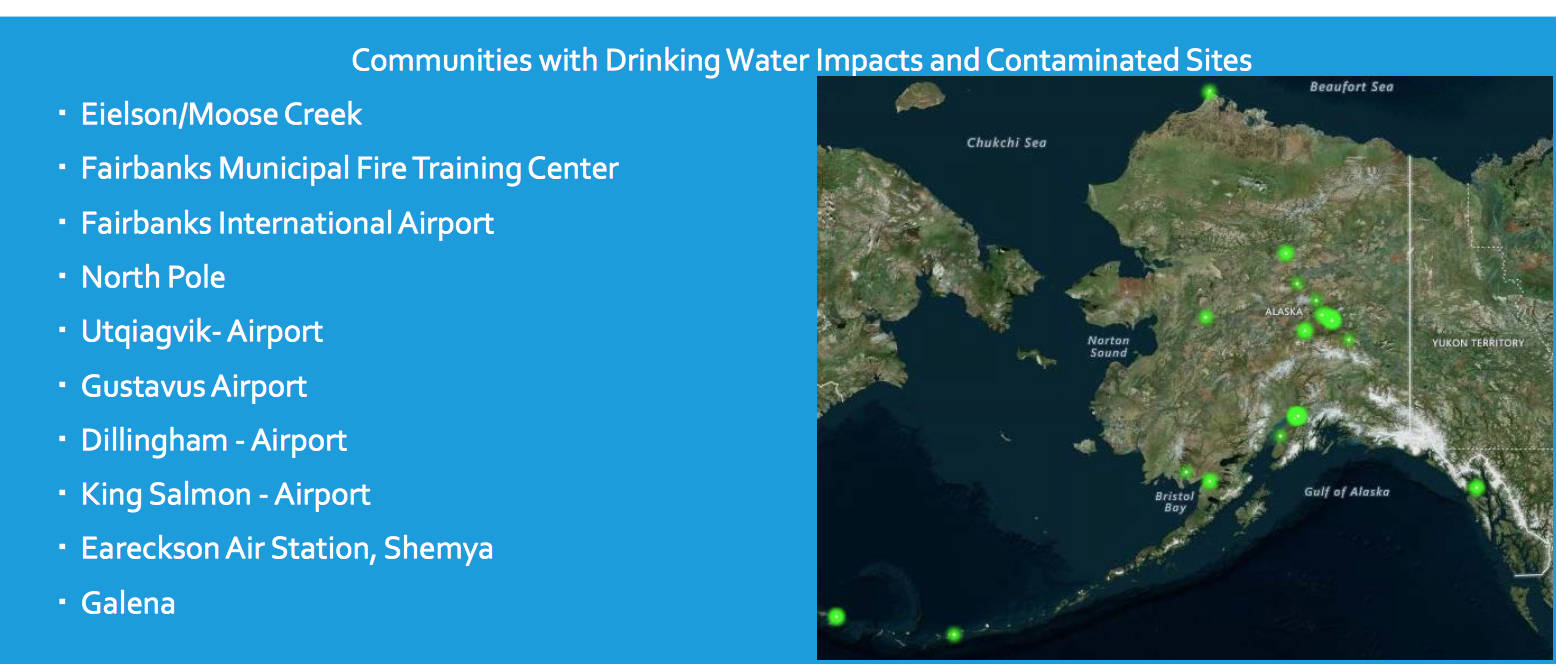I live in the Gustavus PFAS plume. Per/polyfluoroalkyl substances (PFAS) are a toxic family of chemicals that were introduced into Gustavus’ drinking water via firefighting foam, known as Aqueous Film Forming Foam (AFFF), that Alaska’s Department of Transportation (ADOT) chose to use, uncontained, for testing and training at our airport. Gustavus Airport was identified as contaminated in July 2018. My home drinking water well near the airport was tested in September 2018. The results were 133 parts per trillion of PFAS. I subsequently became a voracious late night reader of scientific studies concerning PFAS.
[H2-Oh No! Juneau tests groundwater, soil for chemicals]
Anything measured in parts per trillion (ppt) seems pretty insignificant, but I quickly found that is not the case with these chemicals. Like lead, there is growing evidence that no amount of PFAS is safe. Its man-made bond is indestructible. It moves far and wide, wherever water goes, and the carbon/fluorine bonds hold. Forever.
Alaska’s Department of Environmental Conservation (DEC) was in the process of adopting new regulations at the time my well was tested. Because of the extremely toxic nature of these PFAS chemicals, the ADEC was in the process of developing, and was already using, a more stringent set of regulations, so my well was tested for five different PFAS commonly associated with AFFF. Water that tested above 65 ppt for the sum of these five PFAS was considered a health hazard. The regulation packet that initiated this approach was up for public comment shortly after my results came in. I was impressed by the attention to scientific literature and the overall concern by the state government and advocacy groups. I was proud that my state was attempting to lead the nation in health-protective regulations regarding PFAS. However, based on the literature I was reading, even 65 ppt of five PFAS was not conservative enough and my public comment reflected that. Many studies suggest that there is no safe level of exposure due to the propensity of PFAS to bioaccumulate and biomagnify.
The public comment period ended, a new Alaska governor took office, and we waited to hear what our feedback had accomplished. And we waited. We heard Gov. Mike Dunleavy had put the new regulatory package on hold, then we started to hear that the carefully researched and drafted regulations had been dismissed entirely. We were going to go backwards, adopting an outdated standard; instead of counting the sum of five PFAS, Alaska would count only two. Dunleavy and DEC Commissioner Jason Brune were giving the top-down order to ignore three of the most commonly detected PFAS compounds in Alaska: PFNA, PFHxS and PF. The scientific literature that prompted 2018’s DEC staff to act quickly to implement more protective standards was being blatantly disregarded by the new administration. Recently, ADEC scientists’ protests to this non-scientific, outdated approach are being disregarded as “opinion” despite the existence of dozens of peer-reviewed scientific papers that back them up. Scientists and state workers with 30 years of experience protecting Alaskans at DEC are afraid that speaking against this administration’s decision could cost them their jobs.
[Opinion: Why I recently became a ‘PFASist’]
This rollback in regulations by our state government is not only negligent, it is an unconscionable attack on public health and safety. Health risks from PFAS include (from Alaska’s Department and Social Services web page): ulcerative colitis, liver damage, abnormal fat metabolism, high cholesterol, kidney cancer and chronic kidney disease, high blood pressure in pregnant women, decreased response to vaccines, testicular cancer and decreased fertility, thyroid disease, and reduced birth weight.
Knowing there is such a toxic contaminant in our drinking water and choosing to ignore the vast body of recent science on PFAS goes directly against DEC’s mission of “Conserving, improving, and protecting Alaska’s natural resources and environment to enhance the health, safety, economic, and social well-being of Alaskans.”
Kelly McLaughlin is the Gustavus PFAS Action Coalition (GPAC) Chair. My Turns and Letters to the Editor represent the view of the author, not the view of the Juneau Empire.

